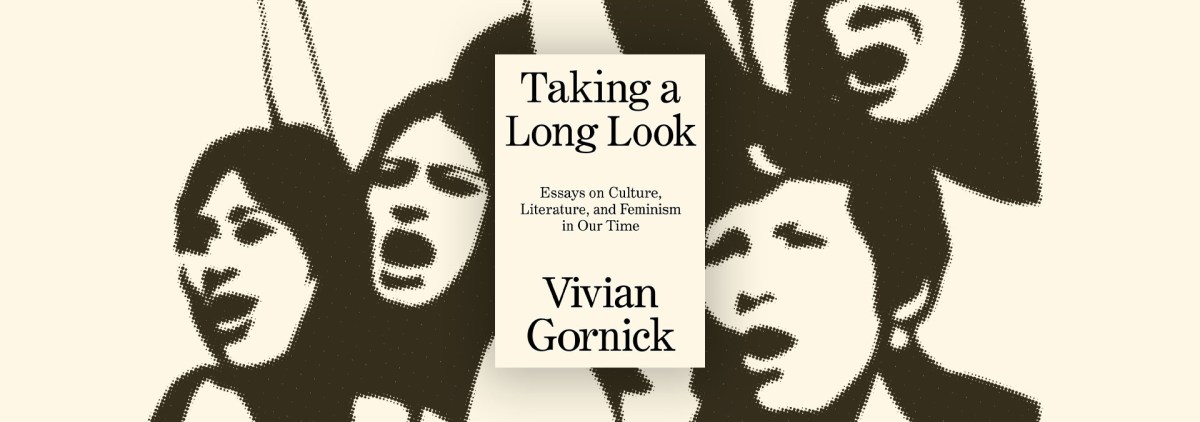[ad_1]
In a 2018 interview with the Public Voice Salon, Vivian Gornick responded to a question regarding her role in the revival of the memoir genre by saying, “I did not do anything extraordinary; it was a genre whose time had come.” She echoes this opinion in many of her interviews. According to her, memoir writing as a genre was re-birthed in a particular historical context and should be less obsessed with the self and its vulnerabilities and more preoccupied with the presence of a narrator and their ability to weave a story. In the essay on Alfred Kazin in Taking a Long Look she writes, “…in writing them, Kazin came to understand what every good memoirist understands: that the writer’s own ordinary, disheveled, everyday self must give way to that of a narrating self — a self who will tell the story that needs to be told.” Storytelling, then, is the sine qua non of Gornick’s oeuvre. She brings this ink – that of the memoirist – to each of her subjects, whether it is a writer, a book, a movement, or a city.
Taking a Long Look, Gornick’s latest, is a collection of essays on literature, culture, feminism, and New York. Many things work against this collection, including the fact that because these essays have been republished decades after their original appearance in other publications, the book feels anachronistic. For instance, the essays in the “Essays in Feminism” section originally appeared as a separate essay collection in 1978, many of the essays in this section encircle feminist ideas that are essentialist and individualistic, even if varied. In “The Women’s Movement in Crisis,” she writes: “Each feminist is a microcosm of feminism, and as discrete each one’s feminism is, it still contains the whole thing.” There is something both alluring and discomforting about this sentence. It oversimplifies the complexities of representation and difference, making feminism sound like a brief togetherness where solidarities may be unpredictable but rarely uncomfortable, something that feminists today – particularly feminists of colour and queer feminists – attempt to challenge. But these discomforts flow from a vantage point that distance allows. A profile of Gornick’s work in October 2020 in the New York Review of Books notes that she spoke for “mostly white women, often middle class who saw their experiences reflected in one another’s to an uncanny degree.” One, therefore, wonders if there is utility in such a republication.
But to look at the past is to be able to retrospectively thumb through a map of our movement. For instance, “The Women’s Movement in Crisis” begins with the line: “On Tuesday, November 4, the people of New York State shall go to the polls to vote on whether or not the Equal Rights Amendment should be added to the constitution.” In a moment when equality is being watered down across the world, such reminders are not only helpful but necessary. These essays, thus, function as a literal archive, whose relevance and anachronism can both be measured in their distinction from the present. To show us how far we have moved.
Taking a Long Look is an uneven collection, and it does not pretend to be anything other than a disorganized set of essays. No two essays are alike – each profile, each review, has its own story and cast of characters. While Gornick loyalists may be able to discern the moments which are characteristically her; when she throws in a sentence that you hadn’t thought you needed until that moment, where she incises the most peculiar experiences, and makes the strange feel familiar and the familiar less so. Gornick wrests meaning from chaos. The collection may, however, fail to impress the unacquainted, who may not have the patience for essays that elude a running thread.
To read Gornick is to firstly fall in love with the act of reading. The essays in the literature section serve as an interesting example because they capture Gornick as a reader. Except “The Reading Group” – which is about a group Gornick has been reading memoirs with for a long time– the essays in this section are mostly reviews and profiles filled with rich details that go beyond the material. These are pieces that contain gateways to further reading; essays embroidered with literary references that keep gathering in the margins, waiting to be discovered. For instance, read Gornick on Melville and you will hear of other Melville readers, and meeting the poet Edna St. Vincent Millay in these pages means also hearing about Nancy Milford’s portrait of Zelda Fitzgerald. In the essay “The Reading Group,” she writes, “I was reminded of something Randall Jarrell had once written: that it was an atmosphere of reading that we wished to inhabit, one where reading is as elemental as air and light and water.” Here, reading is indeed elemental.
Every writer wants to be read, but few writers seem to believe in the strength of reading as much as Vivian Gornick. It is incredible what she can read out of material. The closeness of her reading resembles an archivist collecting items to store, cataloguing little details invisible to others – like the comparison of Grace Paley to Rothko or the thread running between the words of Edmund Gosse and Rachel Carson despite them being fifty years apart. In Gornick’s hands, everything has a story to tell.

NON-FICTION
Taking a Long Look
by Vivian Gornick
Verso
Published March 01, 2021

[ad_2]
Source link
